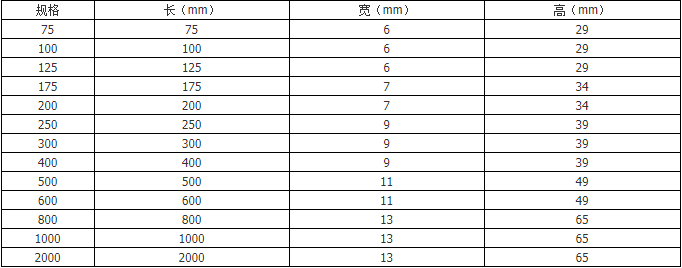Oct . 31, 2024 14:43 Back to list
Understanding the Functionality of Pin Go No Go Gauges in Precision Measurement
Understanding the Pin Go/No Go Gauge
Understanding the Pin Go/No Go Gauge
The pin go/no go gauge consists of a set of pins or rods, each representing a different size that corresponds to the ideal dimensions of the hole or feature being measured. The go pin should fit easily into the hole or feature, indicating that it meets the minimum acceptable size. Conversely, the no go pin, which is larger than the maximum allowable dimension, should not fit into the hole. If the no go pin passes through, the component fails to meet specifications.
pin go no go gauge

Using a pin go/no go gauge is remarkably straightforward. First, an inspector selects the appropriate gauge based on the specifications of the component being tested. After identifying the go and no go pins, the inspector inserts the go pin into the hole. If the pin fits snugly, the component is considered acceptable for further processing. Next, the no go pin is tested. If it does not fit, the part passes the gauge's inspection. This binary method of measuring provides clear and immediate results, making it an efficient tool for manufacturers.
One of the principal advantages of the pin go/no go gauge is its ability to provide a quick assessment of part conformance without the need for elaborate measuring devices or complex calibration procedures. It enhances productivity by reducing inspection time and minimizing the potential for human error. Furthermore, because these gauges are typically made from high-durability materials such as steel or carbide, they offer longevity and maintain their precision over time.
In conclusion, the pin go/no go gauge is an invaluable tool in the manufacturing sector, facilitating consistent quality assurance. It embodies the principles of simplicity and effectiveness, ensuring that critical dimensions are accurately evaluated. Whether used in small workshops or large manufacturing facilities, this gauge plays a vital role in maintaining high standards of quality and reliability in production processes. By ensuring that components meet their specifications, manufacturers can uphold their commitments to quality and performance, ultimately leading to greater customer satisfaction.
-
Precision Manufacturing with Advanced Spline Gauge DesignNewsJul.31,2025
-
Industrial-Grade Calibrated Pin Gauges for Exact MeasurementsNewsJul.31,2025
-
Industrial Filtration Systems Depend on Quality Filter DN50 SolutionsNewsJul.31,2025
-
High-Performance Gate Valve WholesaleNewsJul.31,2025
-
Granite Surface Plate The Ultimate Solution for Precision MeasurementNewsJul.31,2025
-
Granite Industrial Tools The Ultimate Guide for Bulk BuyersNewsJul.31,2025
Related PRODUCTS









